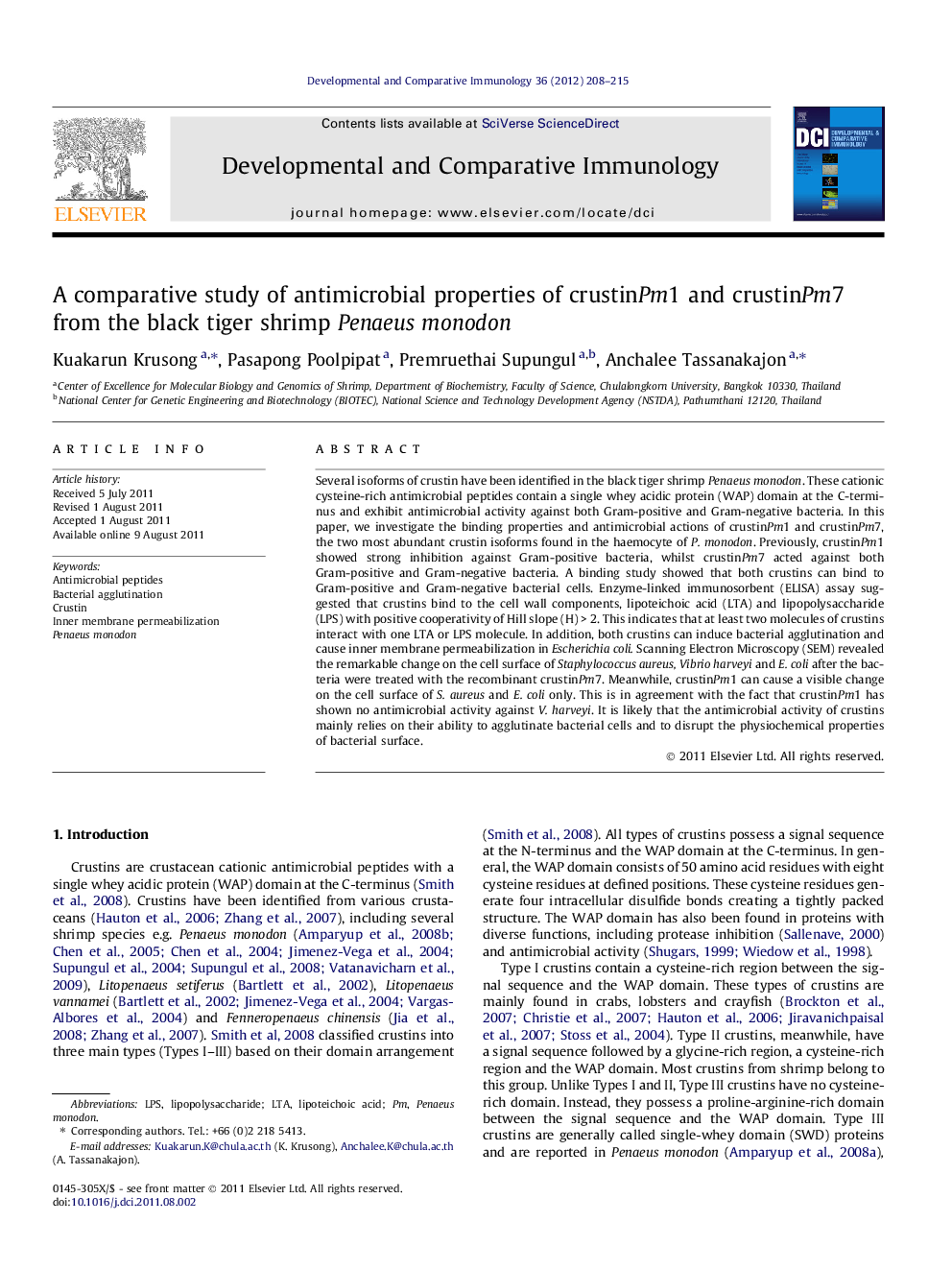| کد مقاله | کد نشریه | سال انتشار | مقاله انگلیسی | نسخه تمام متن |
|---|---|---|---|---|
| 2429415 | 1106494 | 2012 | 8 صفحه PDF | دانلود رایگان |

Several isoforms of crustin have been identified in the black tiger shrimp Penaeus monodon. These cationic cysteine-rich antimicrobial peptides contain a single whey acidic protein (WAP) domain at the C-terminus and exhibit antimicrobial activity against both Gram-positive and Gram-negative bacteria. In this paper, we investigate the binding properties and antimicrobial actions of crustinPm1 and crustinPm7, the two most abundant crustin isoforms found in the haemocyte of P. monodon. Previously, crustinPm1 showed strong inhibition against Gram-positive bacteria, whilst crustinPm7 acted against both Gram-positive and Gram-negative bacteria. A binding study showed that both crustins can bind to Gram-positive and Gram-negative bacterial cells. Enzyme-linked immunosorbent (ELISA) assay suggested that crustins bind to the cell wall components, lipoteichoic acid (LTA) and lipopolysaccharide (LPS) with positive cooperativity of Hill slope (H) > 2. This indicates that at least two molecules of crustins interact with one LTA or LPS molecule. In addition, both crustins can induce bacterial agglutination and cause inner membrane permeabilization in Escherichia coli. Scanning Electron Microscopy (SEM) revealed the remarkable change on the cell surface of Staphylococcus aureus, Vibrio harveyi and E. coli after the bacteria were treated with the recombinant crustinPm7. Meanwhile, crustinPm1 can cause a visible change on the cell surface of S. aureus and E. coli only. This is in agreement with the fact that crustinPm1 has shown no antimicrobial activity against V. harveyi. It is likely that the antimicrobial activity of crustins mainly relies on their ability to agglutinate bacterial cells and to disrupt the physiochemical properties of bacterial surface.
► CrustinPm1 and crustinPm7 bind to both Gram-positive and Gram-negative bacteria.
► CrustinPm1 and crustinPm7 bind to bacterial cell wall components, lipoteichoic acid (LTA) and lipopolysaccharide (LPS) in a positive cooperative manner with a 2:1 stoichiometry.
► CrustinPm1 and crustinPm7 can induce bacterial agglutination.
► Only crustinPm7 possess strong permeabilizing activity membrane on Escherichia coli strain MG1655.
► Scanning electron microscope (SEM) revealed changes at the surface of bacterial cells after treated with either crustinPm1 or crustinPm7.
Journal: Developmental & Comparative Immunology - Volume 36, Issue 1, January 2012, Pages 208–215